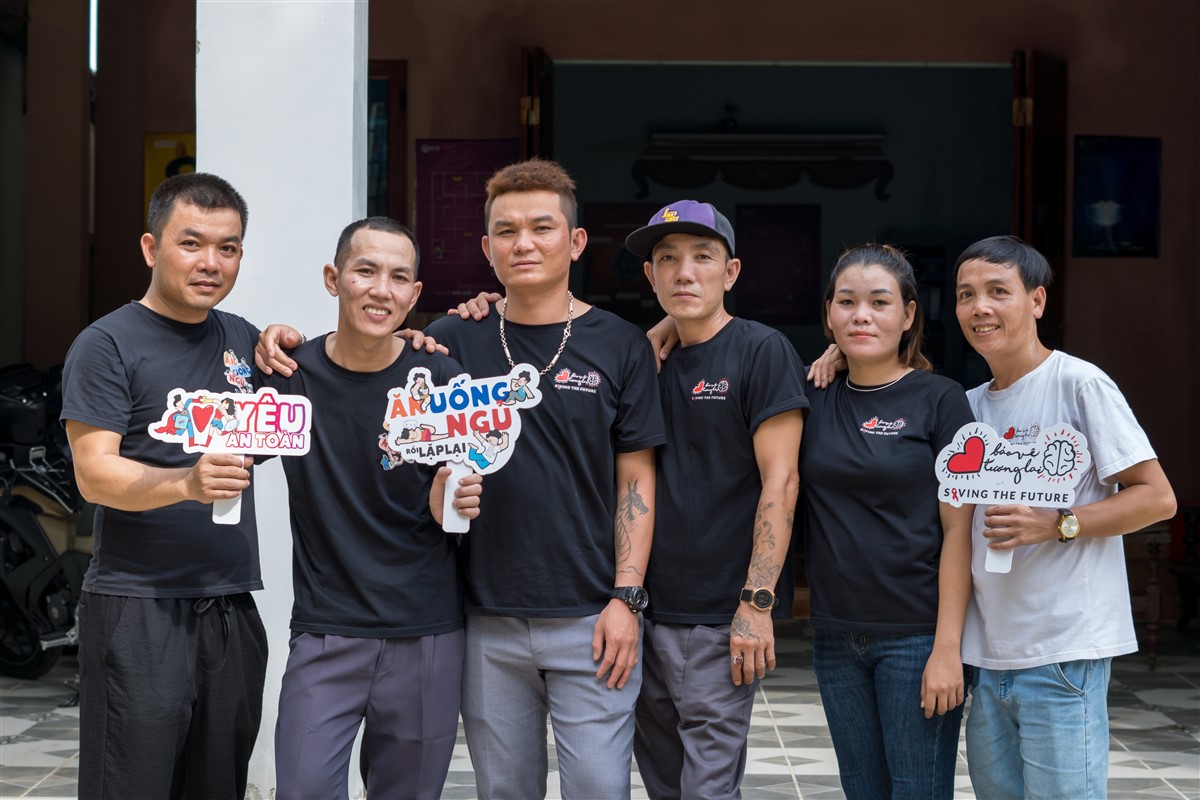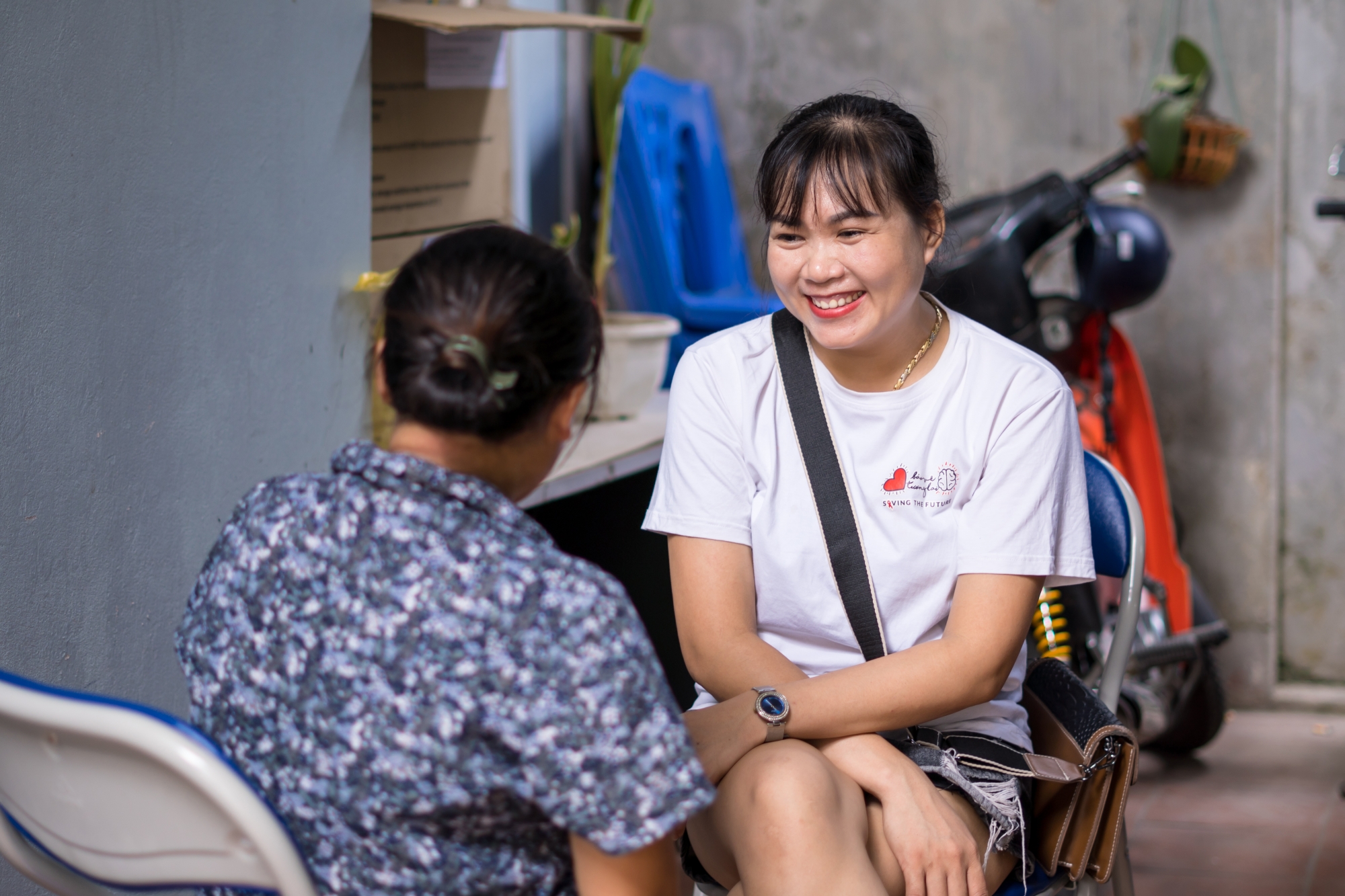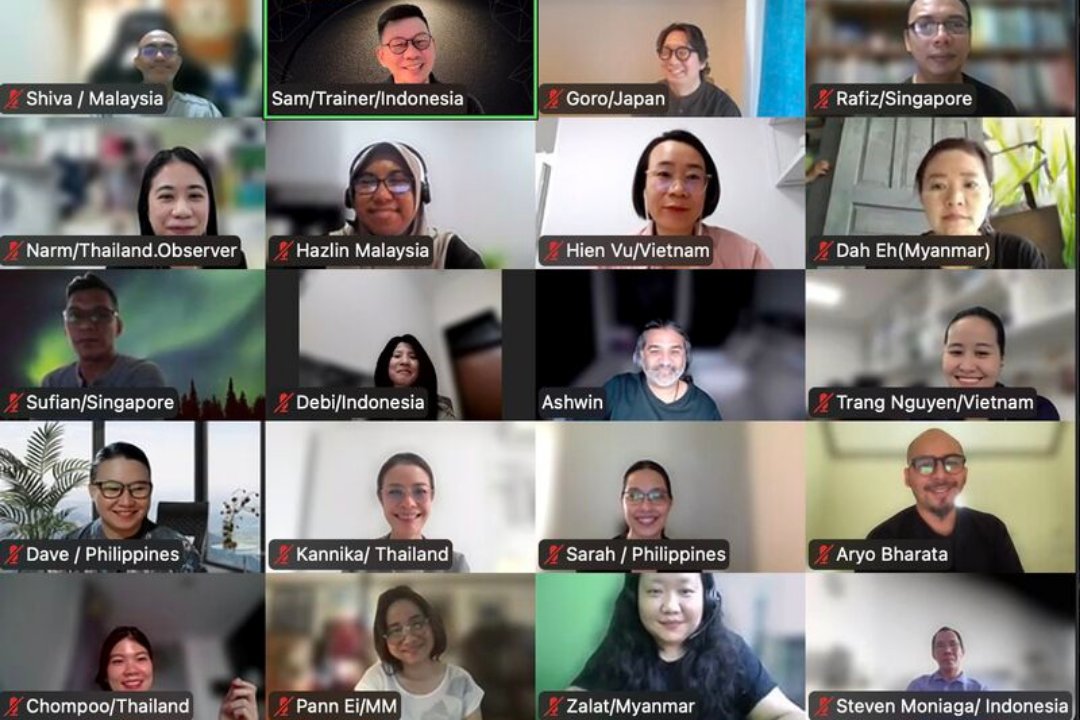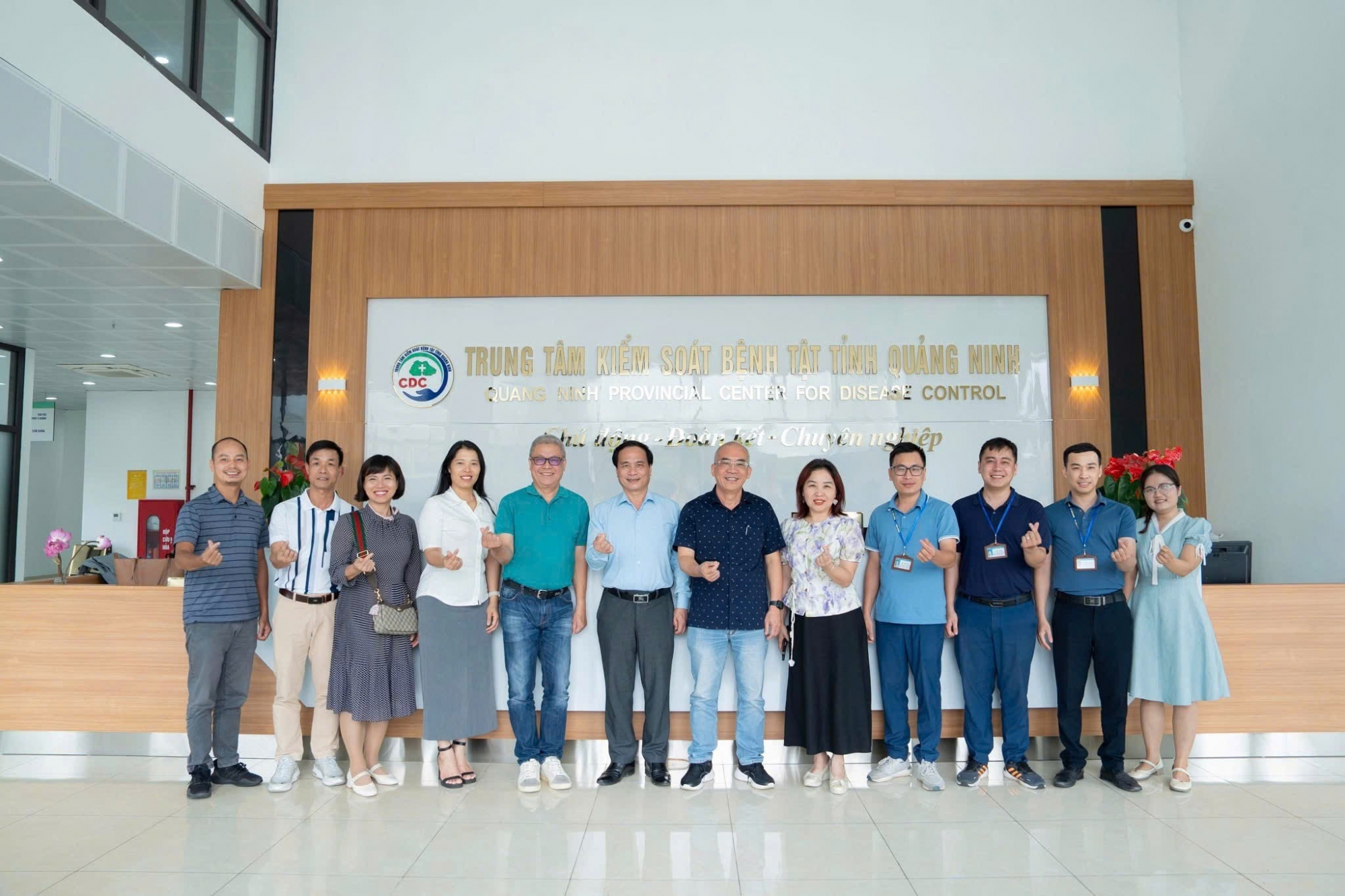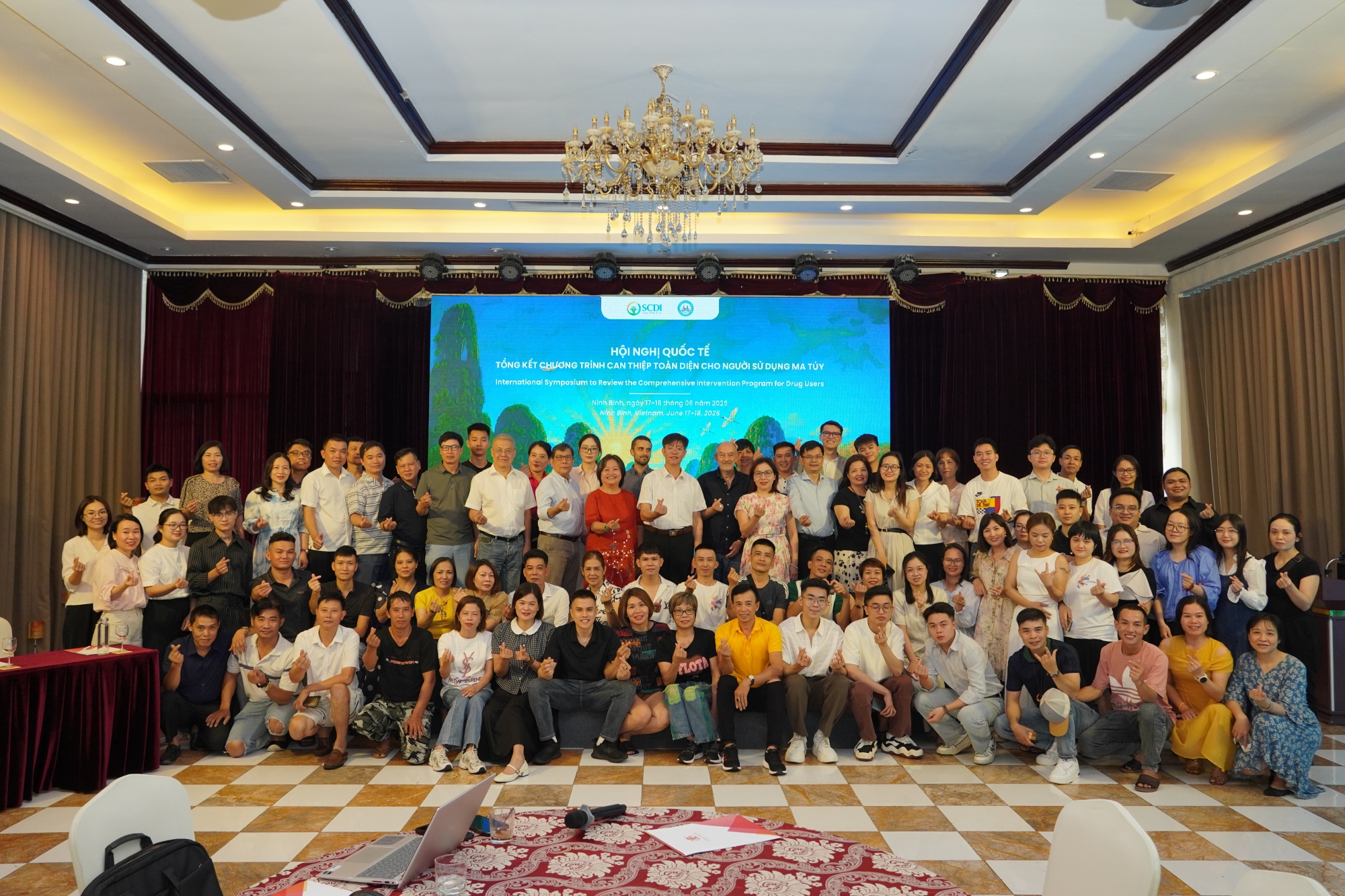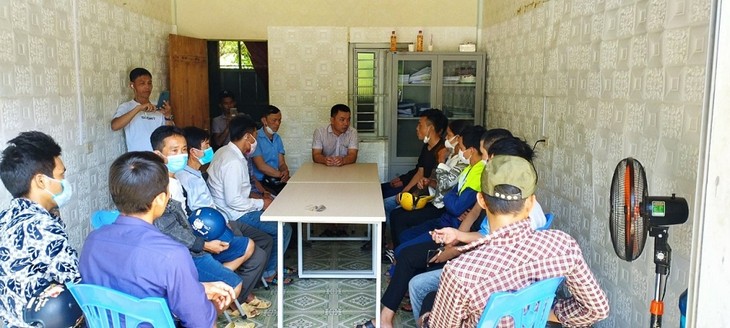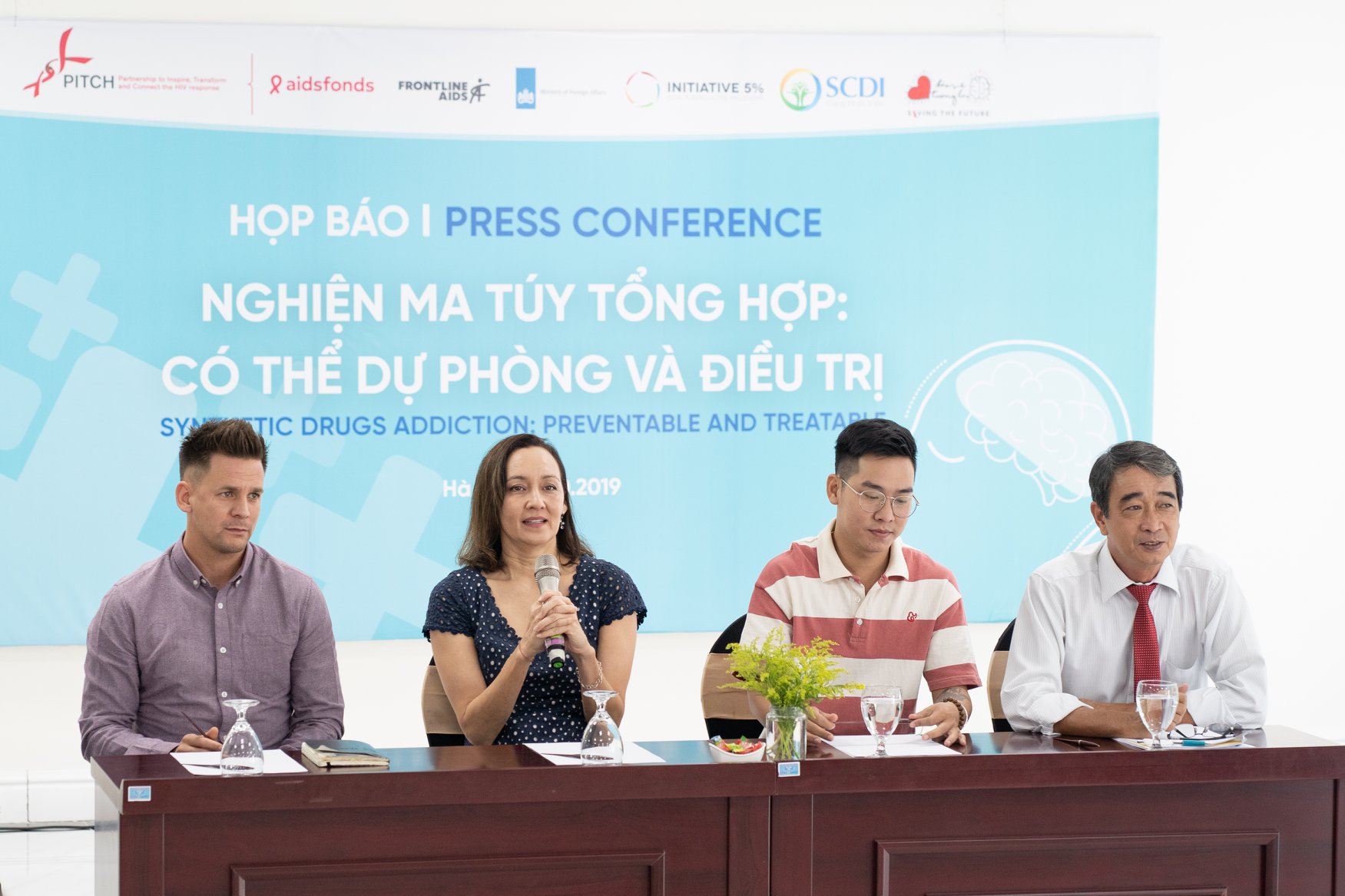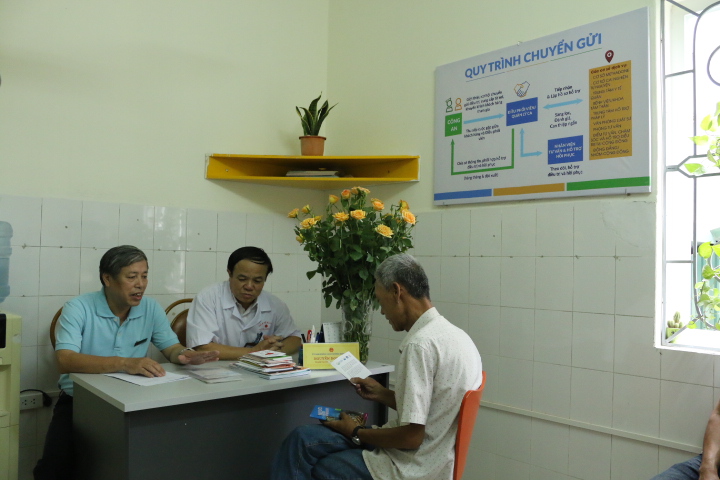The Sao Va group was established in September 2021 with the support of SCDI (Centre for Supporting Community Development Initiatives).

Photo: Sao Va members share insights into their work
Among the 9 members of the peer support group, only leader Lang Chung Hien is not an addict, but he lives with HIV. The remaining 8 members all manage their addictions and HIV with methadone and ARV therapy. Leveraging their shared experiences, they can reach at-risk groups in the area more effectively than traditional health workers.
Mr. Lang Chung Hien shared that due to the district's vastness, most communes harbor individuals struggling with addiction and HIV, particularly remote villages like Tang and Na Sanh in Tien Phong commune. Traveling to these areas is challenging, making individual outreach inefficient. Therefore, the group divides itself by region and clientele for better deployment of activities.
"There are 2 groups of customers" Mr. Lang elaborated. "For active clients, we meet monthly to connect. We counsel those with addiction but not yet on methadone to understand and join the treatment program and encourage lapsed ARV users to resume their medication. Traditional clients are seen every three months for testing, access to supplies like condoms and syringes, and educational sessions to build their self-protection and community awareness."
"Like fellow soldiers, their members navigate every corner, reaching new cases and patients who couldn't access treatment facilities on their own. They diligently search for them out, encourage them to get tested, and guide them towards care. Their contribution is truly commendable," said Dr. Le Quang Trung, Deputy Director of Que Phong District Medical Center.
Engaging high-risk individuals for testing is achievable but enrolling them in Methadone prevention or ART programs is challenging. Many lack the necessary documents, as Lo Van Nhat experienced. Lo Van Nhat, a member of the group, shared a case in which, to complete the transfer procedures for the Methadone treatment program, the person in need had to have a citizen ID and a card. Unable to use pawned items for photo identification, they finally received treatment with the support of the SCDI coordinator in Nghe An.
With the advantage of insiders and diversified approaches, community organizations like Sao Va serve as a bridge to deliver HIV/AIDS prevention services to high-risk groups, including people who inject drugs, sex workers, and men who have sex with men. These are populations that the state health system finds challenging to reach for the provision of HIV prevention services.
Take Lo Van Giap in the Thai Phong block of Kim Son town as an example. The Giap house is situated on a poverty-stricken hill. "I had to come here many times to persuade Giap to take methadone" shares the person involved. "Often, I was chased away by Giap, who insisted I shouldn't come or listen. It was only after seeking advice from his relatives that, finally, in April of last year, he agreed to undergo methadone treatment."

Photo: Mr. Lo Van Giap, who was recommended by Nhat, a member of the Sao Va group, to be included in the methadone treatment program.
Luong Van Tam in Tuc Pang village, Dong Van commune, is also a special "customer" of Sao Va. Tam works as a laborer in an industrial park in Dong Nai province. Two months ago, he felt extremely fatigued, experiencing symptoms of cough and fever. Consequently, he requested leave from his job to return to his hometown. Upon learning of this, Lu Van Hai, a member of the Sao Va group, visited and persuaded Tam to undergo testing for both TB and HIV. The results revealed a co-infection with both diseases.
"When I was there, I felt very weak, enduring diarrhea and fever for almost a month. If I hadn't heeded your advice and undergone testing promptly, I don't know how I would be right now. Upon arriving at the hospital, I was too weak to sign the paperwork, as the doctor recommended" Tam shared.
For individuals like Luong Van Tam or Lo Van Giap, fear of disclosure often leads to hesitation. They avoid communication with people around them and refrain from visiting state health facilities for examinations. Without the support of community-based organizations like Sao Va, accessing comprehensive HIV services becomes challenging for them.
By the end of October this year, Que Phong had detected 32 newly infected HIV patients. The Sao Va group identified 18 cases, accounting for 56%, and placed nearly 50 cases into Methadone treatment, out of a total of 66 patients at the Methadone treatment site in the district health center.
Though Que Phong remains a high-risk area for HIV/AIDS, community organizations like Sao Va are actively reaching target audiences with critical prevention services. By providing clean needles, distributing condoms, and offering drug withdrawal treatment like Methadone, they have demonstrably contributed to controlling the HIV infection rate in the area.
VOV2
Đinh Trang

